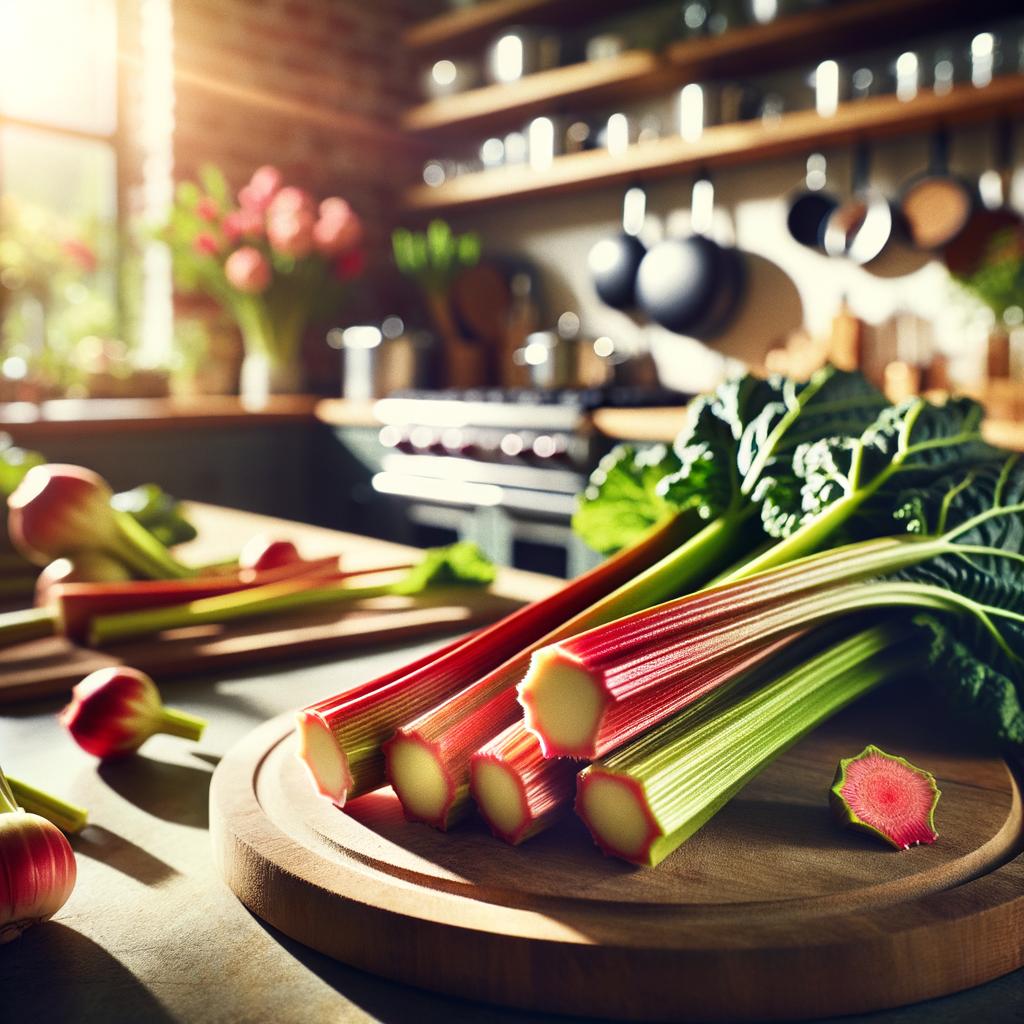Fresh Rhubarb

Description
Rhubarb, a perennial vegetable, is an enchanting ingredient with a history as rich as its vibrant hue. This distinctive plant, with its long, ruby red stalks and large, green leaves, has a unique appearance that is both striking and inviting. The stalks, which are the only edible portion of the plant, are firm and crisp, much like celery, but with a glossy sheen. Rhubarb's flavor profile is a captivating blend of tartness with a hint of sweetness, a combination that sets it apart from other ingredients and makes it a versatile addition to various dishes.
Primary Uses
In the culinary world, rhubarb is often treated as a fruit, despite being a vegetable. It is commonly used in sweet dishes, such as pies, crumbles, and jams, where its tartness beautifully balances the sweetness of the dish. Rhubarb is a key component in traditional British desserts, like the beloved rhubarb crumble, and is also used in Persian cuisine to add a tart note to savory stews. Beyond its culinary uses, rhubarb has been used in traditional Chinese medicine for centuries due to its purgative properties.
History
Rhubarb has a fascinating history that dates back to ancient China, where it was first cultivated for medicinal purposes around 2700 BC. The plant's journey to Europe was an intriguing one, traveling along the Silk Road and eventually reaching the shores of Britain in the 14th century. However, it wasn't until the 18th century that rhubarb was recognized for its culinary potential, when sugar became more widely available and affordable. The combination of tart rhubarb and sweet sugar was a match made in heaven, and thus began rhubarb's transformation from a medicinal plant to a beloved ingredient in desserts.
Nutritional Information
Rhubarb is a nutritional powerhouse, packed with vitamins and minerals. It is an excellent source of Vitamin C, which boosts immunity, and Vitamin K, which supports bone health. It also provides a good amount of fiber, promoting digestive health. Despite its tartness, rhubarb is lower in sugar than other fruits typically used in desserts, making it a healthier choice. However, it's worth noting that while the stalks are edible and nutritious, the leaves of the rhubarb plant are toxic and should never be consumed.

